I always like to see developers making conscious, and conscientious, use of their selected platform.
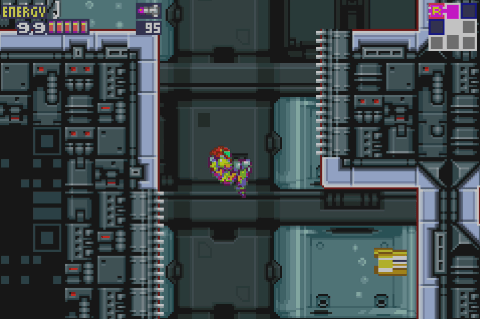
For example, here we have the real path to Sector 5’s objective tucked behind a hidden block that offers a small, discreet visual cue at the very right edge of the screen. This is something that wouldn’t really have worked in console Metroid games due to the uncertainty of television pictures and overscan — some tubes would have shown too much of the hidden passage and given it away while others would have made it truly hidden and left players casting about for the way ahead. But with the fixed resolution of the GBA screen, Fusion’s map designers could give a subtle hint to observant players without making it too obvious.
This sector introduces a number of new creatures whose real value isn’t immediately apparent — though they might jog the memories of series veterans. These manta ray things leap straight up and slowly descend, dropping corrosive fluid as they flutter to the ground. But they have a greater value that becomes evident only later, once you acquire this area’s main weapon upgrade.
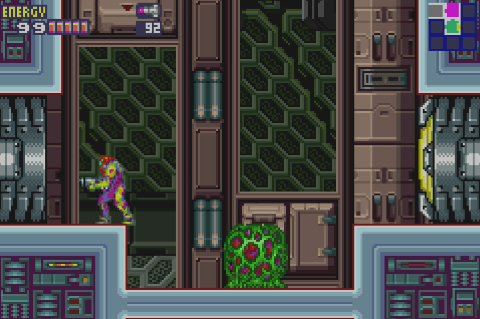
And there there are these lattice shrubbery things, which initially appear both completely inert and completely indestructible. They are completely baffling at first, since they literally do nothing but sit there.
Returning from the original Metroid in this area are Wavers, which now behave somewhat differently than before. Rather than drift aimlessly in sine wave patterns at all times, they now alter their flight pattern when they pass directly in front of Samus, accelerating to collide with her. You can actually exploit this behavior in this room — when they plow into the wall, they become momentarily stuck, and they protrude far enough that you can actually hit them through the barrier. If you don’t realize that, however, this room is a bit stressful, as blasting through the wall with a bomb causes the entire barrier to break away, opening the room to half a dozen erratic enemies.
Once again, you unlock doors with a terminal rather than a tool. That’s not very Metroid-like at all.
Two yellow doors become immediately accessible once you lower the security lock, but the one to the right leads to this: A shaft with a ledge too high and far away from the ladder you climbed to reach this point to be accessible. However, armored Rippers drift back and forth within the shaft, which is comfortingly familiar; despite all the changes Fusion brings to the series, these guys still exist entirely to serve as temporary platforms once you acquire ice powers.
Speaking of which, said powers are just beyond the other yellow hatch. Ice missiles reproduce the function of the classic Ice beam, but in a way they make for a faster, smoother play experience. The Ice beam had the side effect of reducing your firepower by adding the freeze effect to basic attacks; in Metroid, this meant you had to shoot everything twice as many times in order to destroy it. Super Metroid switched things up by causing the freeze effect to wear off with time rather than using the Ice beam as a toggle, but it still meant enemies would freeze when fired upon… whether you wanted them to freeze or not.
Here, though, you have more control over the freeze effect. Rather than every single basic shot freezing a monster, now you only freeze them when you use your secondary weapon. Combined with the instant single-button toggle Fusion adds for missile attacks, it works really well — a small but well-considered interface improvement.

Yes, that’s better.
Not cool” Another one of those mimics, this time imitating an Energy Tank.
As has happened several times already, acquiring a new item causes a change to affect the enemies in the current area. This is similar to Metroid II‘s arbitrary gating, but it’s much more graceful than that game’s earthquakes causing subsidence and lowering the water level to reveal new areas. The changes here take place within the X parasites infesting the station, who react to the growing threat that Samus represents to them. It’s still arbitrary and conspicuously designed, but it demonstrates a much better integration of narrative and mechanics.
In this case, those inert nests of vines or whatever now come to life. They remain indestructible, but now they grow upward and cause impact damage to Samus. They’re both a passive threat and, in some cases, a deliberate obstacle. You can freeze them with the Ice missiles now, but it doesn’t do you any good if you freeze one after it’s risen to block a passage.
Which isn’t to say frozen vines aren’t useful; this one bridges a gap that allows you to build up a speed boost and reach a new area.
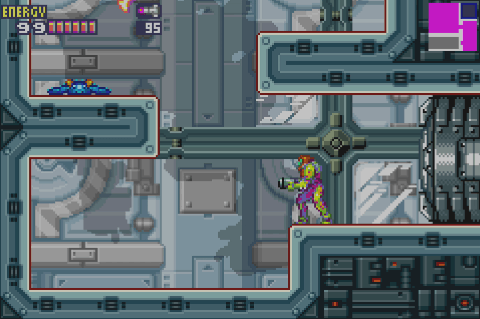
Another new dynamic element here: A massive shadow appears in the background of the main chambers of the sector, swooping quickly back and forth. It’s ominous, but you can’t do anything about it…
…though that bizarre presence makes the sudden alarm considerably more alarming once the screen begins strobing with a red light. A computerized voice begins warning you about an emergency. Is it related to the ominous shadow?
No, it’s just a machine error. You’re given six minutes to make your way to Sector Three and shut down the boiler before it detonates the station.
And you burn about 30 seconds on the elevators alone, which doesn’t help soothe the nerves.
This works as an excuse to revisit previously explored areas under a new frame of reference — a bit of backtracking, but one that doesn’t feel aimless or repetitive. Instead, you need to recall the paths and passages through this area, such as the hidden, crumbling block under this expand-o-alien. While six minutes is actually quite generous if you know where you’re going, the padded time allowance lets you bumble around momentarily if needed to remind yourself of the proper route.

A new path opens in the molten regions of the area; the magma remains deadly to the touch, but you can pass beyond it now.
A number of active threats appear in this area, such as more of those retracting monsters and Novas — three-eyed wall-crawlers who, unlike in previous games, now drip fireballs as they scuttle along. On their own, these hazards wouldn’t be a particular bother, but the stress inspired by the countdown timer can result in sloppy play.
It’s good not to take too much damage, though, since the main boiler room…
…culminates in an eye door. Which means you’re gonna have to fight something.
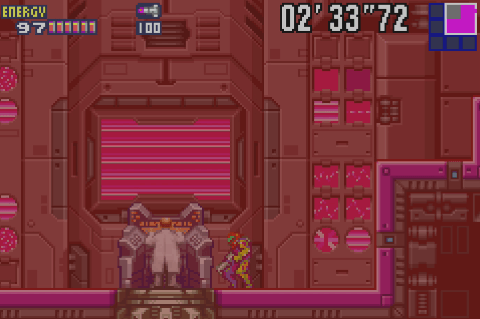
Which turns out to be just a nerd in a lab coat. But! If you walk up to the scientist, Samus takes damage. Counterintuitive as it may be, you have to shoot his guy — the first instance of violence against a human in the Metroid series.
The “scientist” actually turns out to be a Core-X imitating his form. It drifts around, pivoting its vulnerable eye rapidly to return fire at Samus, but ultimately the only challenge here comes from the narrow space in which you’re forced to complete this battle.
Which is ironic, see, because surviving the battle in this narrow space results in the acquisition of the wide beam.
The wide beam strengthens Samus’ blaster yet again while also creating a broad spread — not only do her beams separate from one another more dramatically, they also take on a ring-like form, similar to the ripple laser from Gradius games.

With this task complete, the game allows you at last to return to an area that’s long been cut off: The very first area, the Habitation Deck, closed away when the SA-X blasted its way through the elevators. Adam has restored power, allowing you to put all your new powers to use in a sector you previously experienced at your bare minimum strength. While this clearly stated directive to return to the beginning is, once again, a much less elegant way to nudge players backward than in older Metroid games (which would have locked off the main elevator with some sort of barrier that could be circumvented with the acquisition of an advanced skill), the satisfaction of returning to old haunts with far more capabilities at your command is satisfying enough to make up for it.

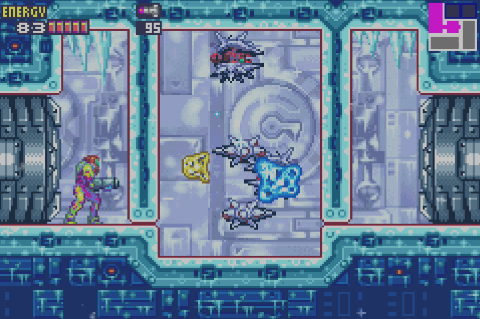



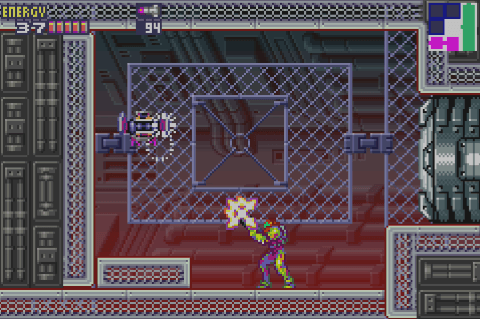
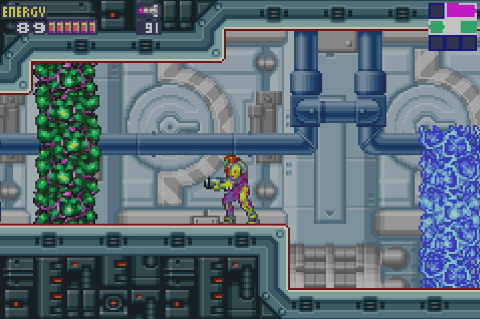


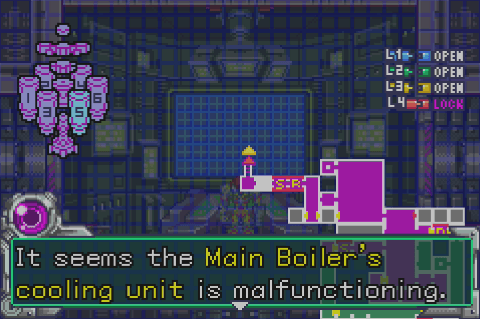

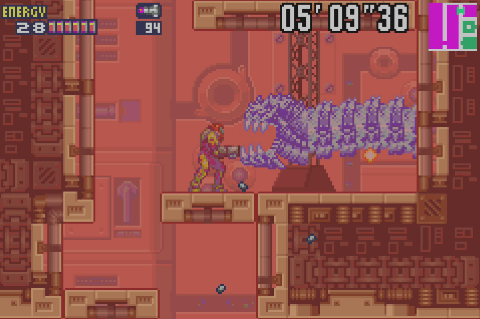
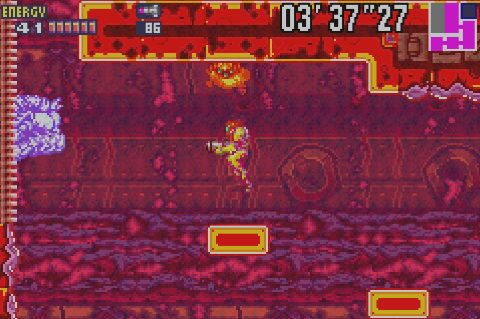
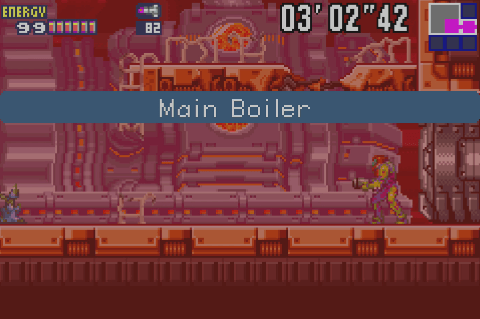
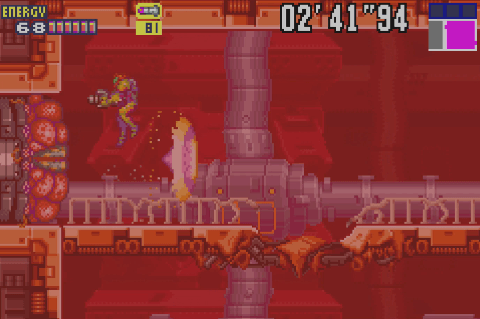
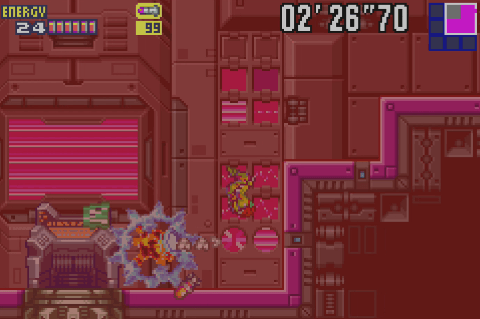
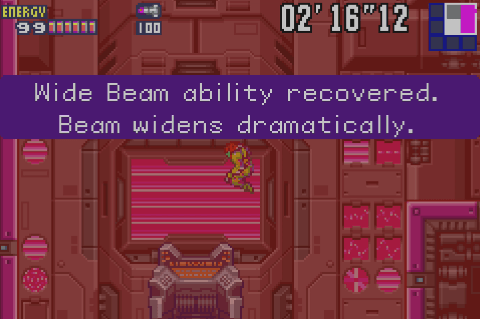
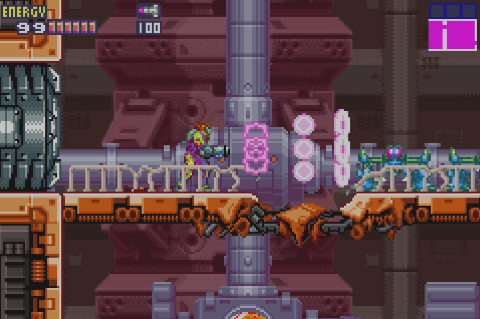
I am not really fond of the mimics. They feel so out of place from the rather semi believable setting, and quite like something that could only exist on games at all.
I always felt the elegance of gating via skills was not just about being subtle, but also empowering the player. Having the gating skill based makes you feel like “whos the man now, dog?” when you overcome the impasse.
I finally get to comment on one of these! I’m glad, too, since Metroid has been my favorite game series since childhood.
I love Fusion, and the idea of it being differently structured than other Metroid games did not immediately occur to me the first time I played it (I was 13 or 14 and more concerned with the fact that the game was really, really hard to see on the original GBA screen).
On the topic of this article, I enjoy how Fusion takes older Metroid enemies and adds new abilities to them, such as with the Wavers, the stationary hive/nest things, the wall-face creatures, and so on. It serves the dual purpose of making these creatures more fun/memorable and also more surprising to those who have played previous titles.
I think that what Metroid Fusion lacks by being more guided than Super Metroid-which makes sense, given the historical and platform context; young gamers in 2002 were not as keen on poking around and backtracking on a handheld as older gamers who cut their teeth on the older Metroid games were-it more than makes up for in mood. The SA-X is easily the best example of setting the mood: when it appears, a sense of dread falls over the player, and in scenes where you must run because it notices you, there’s real fear.
The Nightmare’s shadow is a great example that really affected me when I was playing the game for the first time. You’re just walking back to the Nav room when the screen shakes and this huge shadow is cast over the background. Once I realized what was going on, as I first played this on the original GBA and even in clear light, it wasn’t easy to pick up the first couple of times, I was scared as heck that the next door I opened would find me facing down a gigantic, fast, flying boss. I don’t think any other game does foreshadowing as well as this one did.
Nightmare for me is tied with the SA-X for “most stressful boss characters in a Metroid game.” Part of it is because of how difficult Nightmare was on that old, dark GBA screen - but I suppose I’ll talk more about that when we actually get to that battle.
I wouldn’t quite call the blob/vines’ behavior change as “arbitrary.” It ties into the opening of the yellow gates, both mechanically: something has changed, go explore; and narrative-ly: the opening of the locked gates allows X to spread around more and manipulate things. I mean, yeah, it’s obviously gated content, but I think it works here.